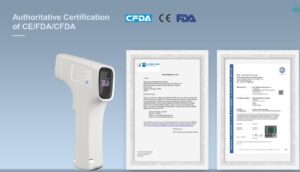LYON, France — A 72-year-old woman with dry age-related macular degeneration (AMD) was the first patient to receive an artificial retina implant as part of the multicenter PRIMAvera clinical trial, which is looking at the safety and efficacy of the PRIMA system.
“Her vision was severely impaired by this condition. We used the ETDRS chart to assess her visual acuity, as this is the current method in ophthalmology. She was able to read only nine letters,” said Laurent Kodjikian, MD, PhD, from Hôpital de la Croix-Rousse in Lyon, who is a former president of the French Society of Ophthalmology. To put that in perspective, a person with normal vision can make out 85 letters, he explained.
“The goal is to get her reading another ten letters,” he told Medscape Medical News.
The hospital where Kodjikian works is one of six centers in France selected to take part in the ongoing AMD clinical trial; other study sites are in Germany, Italy, the Netherlands, and Spain. The 38 study participants will be followed for 12 months after implantation to assess visual acuity and adverse events, and outcomes will be monitored for 3 years. Investigators hope that the findings will lead to the device receiving authorization to enter the market.
The PRIMA artificial retina system has three elements: a tiny wireless retinal implant; a pair of glasses with a camera and digital projector; and a portable processor connected to the projector. The camera captures visual scenes from the surrounding environment. The processor uses algorithms to process and simplify the images, which are then sent back to the glasses. The digital projector uses pulses of infrared light to project the processed images onto the retinal implant’s photovoltaic receptors. These receptors then convert the optical information into electrical stimulation, which excites the nerve cells of the inner retina, allowing them take in the information and transmit it, via the optic nerve, to the brain. This then induces visual perception.
A Delicate Operation
To implant the chip, Kodjikian made a rather large incision — 3.5 mm — and then peeled off the retina, all while looking through a surgical microscope.
“It’s easy to peel off the retina in a healthy eye. However, the procedure becomes more difficult in an eye affected by dry AMD, where the retina tissue is not only very thin and firmly attached to the back wall of the eye, but is also very fragile. A lot can go wrong during this step, so we have to really take our time,” he said. “You can’t go too deep, and if you go too close to the surface, you risk perforating the retina. Like walking on a very thin tightrope, there’s danger all around, and very little room for error.”
After the chip was inserted under the retina, Kodjikian put the retina tissue back into place. “This was the first time I’d ever done this kind of procedure, and it was quite a challenge,” he told Medscape.
The operation took 2.5 hours, which is much less time than the 4 to 5 hours estimated by the manufacturer.
The patient will undergo rehabilitation for 12 months to help her adapt to the system. “Our hope is that this patient will be able to see better with the implant. She probably won’t get to the point of being able to drive a car. And while reading novels in small print may not be possible, it’s quite likely that she’ll be able to read large-print editions,” Kodjikian explained.
Upon activation of the retinal prosthetic, the patient experienced visual impressions that she couldn’t see before the surgery. And 1 month after the procedure, things seem to be on track, according to a press release. “The postoperative result is excellent. There are no complications, the chip is perfectly in place and the vision has not been degraded by the operation. She should now start to improve thanks to rehabilitation,” said Kodjikian.
“Of the various artificial retina systems out there, this one is the most sophisticated because it has the most pixels. The technology will certainly continue to advance. But for the time being, the clinical study should allow us to show that it does work,” he concluded.
In December 2021, he implanted an artificial retina in a second patient, and it took him 50 minutes less than the first one.
This article originally appeared in the French edition of Medscape.
The authors have disclosed no relevant financial relationships.
Eyeupdate Eye-clinic & Optical Supplies, p1, Ajuwon bus stop, Akute/Ajuwon Road, Ajuwon (beside BPNL/MRS Filling station).
Tel: 08107531046, 08034971582.
Our eye-clinic/optical care services cover people from the following locations and near you:
alagbole, akute, ajuwon, lambe, matogun, matogbun, giwa, okearo, koye, oke, arifanla, baale, Road, fagba, abule, egba, agege, ogba, ikeja, G. R. A, oshodi, Berger, ojodu, omole, magodo, yaba, mowe, ibafo, shagamu, Ishagah, shomolu, heritage, estate, ajao, College Road, iju, Road, water, works, omole, magado, ketu, ojota, ikoyi, akiode bus stop, grammar school, first gate, Ala Hausa, Yoruba, Igbo, Benin, Edo, Association, Club, Ikorodu, Ketu, ijoko, jankara, Ladipo, Ojota, Shomolu, Cele, Ogun, Lagos, Lagos Island, Lagos mainland, Ifako, Ijaye, eti osa, Oyo, Lisa, Obawole,Iju, Ishagah, Ishaga, Isaga, Isagah, Ishasi,Obawale,Owode, sang ota, abule egba, redeem camp, Ijebu ode, toll gate, bus stop, Street, along, Nigeria.















